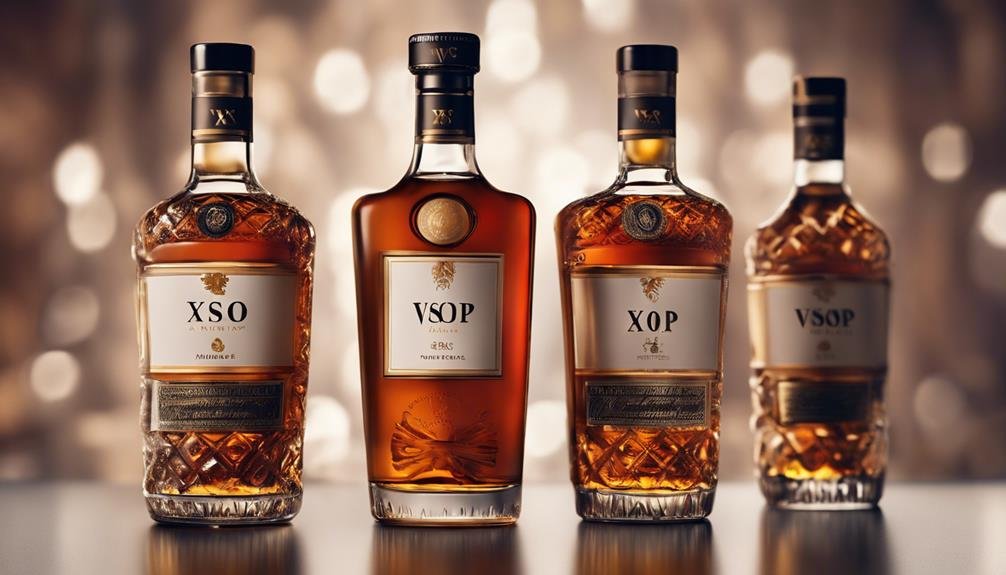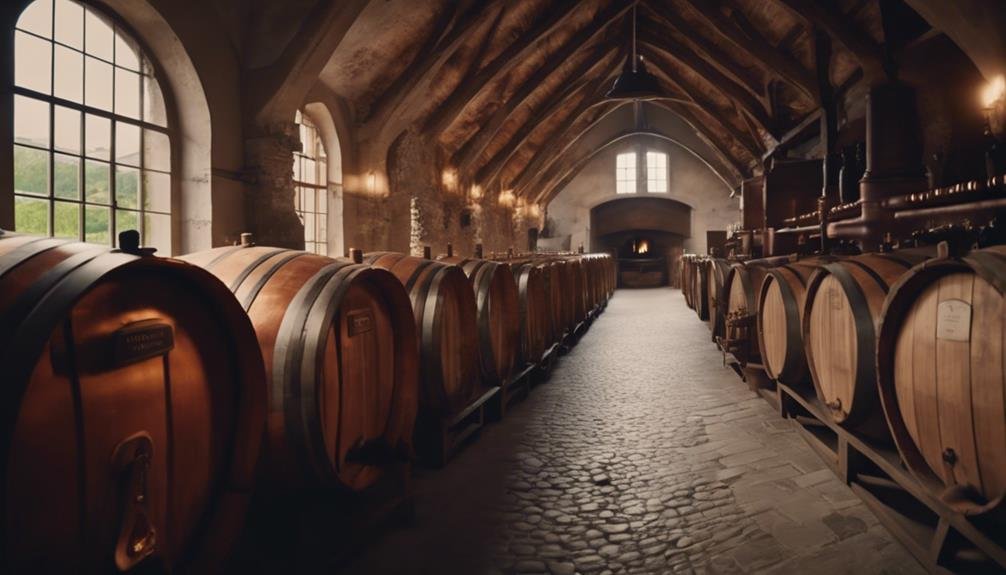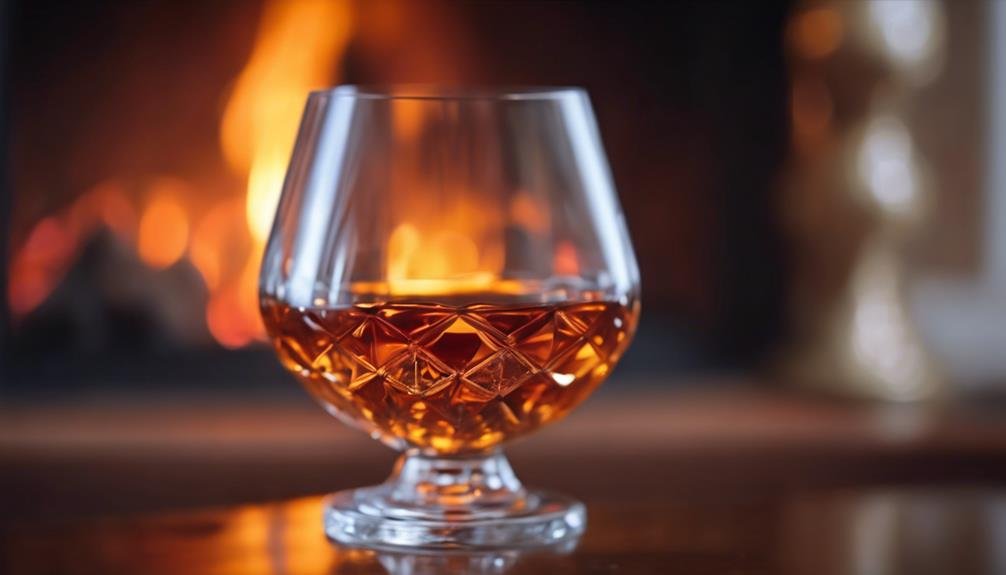Begin a journey into the world of exquisite Cognac, where tradition meets artistry to craft a spirit of sophistication and complexity. From double-distillation in Charentais pot stills to the influence of terroir on flavor, every step in Cognac production is meticulous. Age-old customs and precise aging post-harvest shape the rich flavors and aromas. With diverse oak types and grape varieties, each Cognac is a unique masterpiece. Explore the labeling distinctions like VSOP and XO for insights into aging and taste. Discover the global trend towards premium Cognacs, driven by a growing appreciation for its artistry and complexity.
Cognac Production and Distillation
In the intricate world of Cognac production and distillation, precision and tradition intertwine to craft the renowned grape brandy from the Cognac region of France.
Distillation techniques in Cognac production involve double-distillation in Charentais pot stills, essential for refining the spirit's flavor profiles.
The aging process, vital for developing Cognac's complexity, starts after the harvest on April 1st. Barrel selection plays a pivotal role in shaping the final product, as Cognac gains color and aromas from oak barrel aging.
Different oak types impact the spirit, while adjustments such as caramel color are permitted to enhance the overall sensory experience. Mastering these processes is paramount in creating the diverse and exquisite array of Cognac varieties enjoyed worldwide.
Terroir Influence on Cognac Quality
The distinctive terroir of the Cognac region profoundly shapes the quality and character of its renowned grape brandy. Grape varietal impact plays a significant role in Cognac quality, with varieties like Trebbiano Toscano and Colombard contributing unique flavors.
The region's soil composition, similar to Champagne, influences the grapes' growth and taste profile. Climate effects, such as the maritime climate with mild winters and sunny summers, aid in grape ripening.
Additionally, the aging process in oak barrels adds complexity, depth, and color to the final product. Understanding how these factors interact is essential for appreciating the diverse range of flavors and aromas found in Cognac, making it a truly exceptional spirit with a sense of place.
Labeling and Categorization of Cognac

Cognac Labeling and Categorization showcase the intricate classification system that distinguishes the diverse range of Cognac products. This system includes designations like VS, VSOP, and XO, indicating different aging periods and flavor profiles.
Age statements play a significant role in defining the quality and taste of Cognac, with older varieties often exhibiting more complex flavors and aromas. Additionally, specific crus such as Grande Champagne and Borderies contribute unique characteristics to the final product, influencing its overall profile.
Understanding these labels and categorizations can help consumers navigate the world of Cognac, allowing them to appreciate the nuances of different varieties and make informed choices based on their preferences for flavor and aging qualities.
Global Market Trends in Cognac
Amidst the evolving landscape of luxury spirits consumption, discerning global consumers are increasingly gravitating towards the refined allure of premium grape brandies from the Cognac region of France. The luxury market for Cognac is witnessing significant growth, with consumer preferences shifting towards high-quality, well-aged Cognacs that offer a sophisticated drinking experience.
Key markets like the US, Singapore, and China are driving this trend, with a notable increase in demand for premium Cognacs that showcase exceptional craftsmanship and unique flavor profiles. As consumers become more knowledgeable about Cognac production processes and terroir influences, they are seeking out exclusive offerings that reflect tradition, heritage, and innovation in the industry.
This surge in interest highlights a growing appreciation for the artistry and complexity of Cognac among connoisseurs worldwide.
Traditions and Regulations in Cognac Industry

Reflecting centuries-old customs and stringent guidelines, the Cognac industry upholds a rich tapestry of traditions and regulations that underpin the production and quality standards of this esteemed grape brandy. Heritage preservation is a cornerstone, ensuring that time-honored practices are maintained to protect the legacy of Cognac.
Sustainable practices are increasingly integrated to safeguard the environment for future generations. Artisanal craftsmanship remains at the heart of Cognac production, with skilled individuals employing traditional methods to create exceptional spirits. However, modern innovations are also embraced, allowing for advancements in efficiency and consistency without compromising the essence of this iconic drink.
Balancing tradition with progress, the Cognac industry continues to evolve while staying true to its roots, ensuring a bright future for this distinguished spirit.
Frequently Asked Questions
How Do Different Oak Types Impact the Flavor of Cognac?
Different oak types play a vital role in shaping the flavor of Cognac during the aging process. The choice of oak influences the aroma, color, and taste profiles of the final product, with options like Limousin and Tronçais imparting distinct characteristics.
What Are the Main Grape Varieties Used in Cognac Production?
The main grape varieties used in Cognac production are Trebbiano Toscano, Folle Blanche, Colombard, with Ugni Blanc covering 98% of the region's acreage. The distillation process involves double-distillation in Charentais pot stills, bringing out Cognac's unique flavors.
Why Is Cognac Aged in Oak Barrels After Distillation?
Cognac is aged in oak barrels after distillation to enhance its flavor development. The oak imparts unique characteristics like vanilla, spice, and tannins to the spirit, creating a rich and complex profile sought after by connoisseurs.
What Is the Significance of the Term '1er Cru' in Cognac Labeling?
The term "1er cru" in Cognac labeling signifies a top-tier classification based on the quality and origin of the grapes. It denotes a superior level of grapes from premier cru vineyards, impacting oak aging, and enhancing the Cognac's refined flavor profile.
Why Is the US the Largest Market for Cognac Despite Its French Origin?
The US leads as the largest Cognac market due to cultural influences and consumer preferences favoring luxury goods. Marketing strategies tailored to the American palate, trade agreements facilitating imports, and historical ties further cement this dominance.
Conclusion
To sum up, the global market for Cognac continues to thrive, with an estimated 211.7 million bottles sold in 2020 alone.
This exquisite wine grape brandy, with its rich terroir influences and meticulous production process, remains a symbol of sophistication and luxury in the spirits industry.
As consumer demand for premium spirits grows, Cognac's unique flavors and heritage position it as a staple in the market, attracting a diverse range of enthusiasts worldwide.
